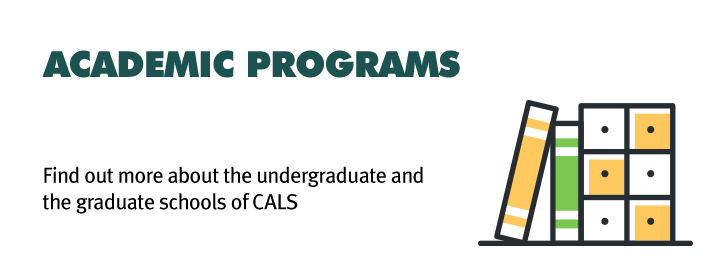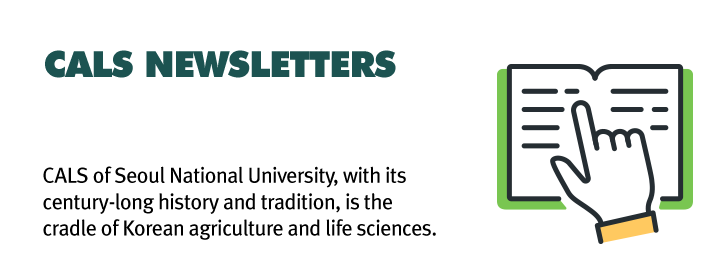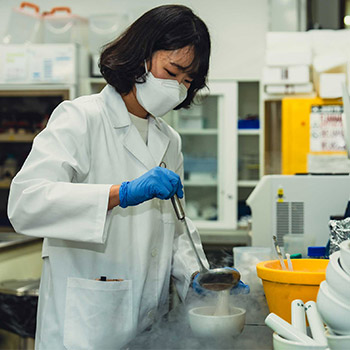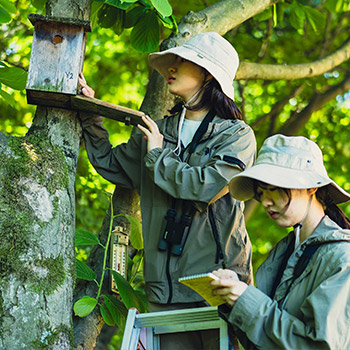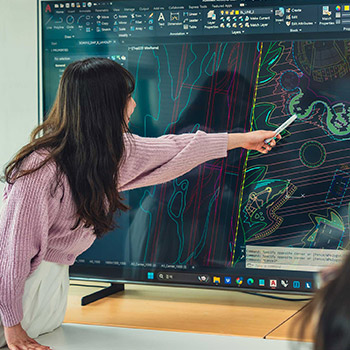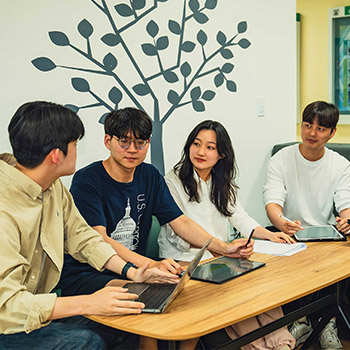Interview with Professor Kim Hyeon-seok, the Headquarter of the Seoul National University Forests
What kind of place is SNUF?
SNUF was established with the purpose of providing a space for academic development, such as test research on forest science, student practice, and dissemination of research results. In addition, we are contributing to the development of mountain villages and the development of local communities. Specifically, we study forest science and technology necessary for forest management. In order to study how to manage forests for carbon neutrality to maximize the carbon absorption capacity of Korean forests, we are measuring in real time how much carbon is absorbed by Korean forests. If you go to Taehwasan forest, there are two towers where you can see carbon dioxide absorption visually. It measures not only the uptake of carbon, but also transpiration, which releases water into the atmosphere. In addition, in 2016, he wrote a paper with 40 countries and published it in Science. In this way, it is aimed at research and education related to forest science.
We also collaborate with overseas universities. After entering the major, students of the Department of Forest Science go on practice in the forest of Hokkaido University. After the practice of our students is over, students from Hokkaido University come to Korea and practice together in the southern forest. The most used forest for research is the Taehwasan forest, because of its location. In addition, it can be thought that only trees are studied in the forest, but research in various fields such as forest ecology, physiology, wildlife zoology, forest hydrology, ecological economics, and entomology is being conducted. All trees planted in SNU are imported from Chilbosan Forest. This is because he runs a nursery on Mt. Chilbo. Many of the commemorative trees planted in celebration of the new president's inauguration were grown in the forest of Mt. Chilbo. But this time, I brought something specially grown in the southern practice forest.
At Southern Forest, we do a lot of education and service to the community. We provide opportunities for forest education and cultural experiences to the underprivileged and youth in the local community, and also operate programs for people engaged in local forestry. In particular, a youth career camp is held in the southern forest, targeting youth in Gwangyang, Suncheon, and Gurye, which are geographically far from Seoul. We receive education for one or two days in the southern forest, and visit NICEM at Gwanak Campus. CALSIAN students are helping with this. In addition to this, forest is also used for the training of tree treatment technicians and tree doctors. Forest healing instructor training is also conducted in the forest.
An eco-campus tour is also underway for Seoul National University members. Retired professor Lee Kyung-kyun tours the forest with the staff and explains the origin of trees. These days, discussions on ESG are hot, and the role of forests in carbon neutrality is very large. We are doing a lot of education on nature from a bigger perspective than the education at the Botanical Hospital.
Please tell us about the future operation plan of SNUF.
Every year around November, an article comes out saying that SNU is a single institution in Seoul with the largest amount of carbon. Not only that, Seoul National University Hospital is ranked 7th. The main school emits 140,000 tons, Seoul National University Hospital emits about 70,000 tons, and the forest absorbs more than 300,000 tons a year. In this way, we are looking for ways to contribute to carbon neutrality.
In the past, conservative management has led to conflicts with the local community despite our efforts. I am also the head of the arboretum, and I am promoting the gradual opening of the arboretum to the public to increase Seoul National University's social contribution. We are looking for ways to approach members of society in a friendly way. Still, the most important thing is research and education. Research in the forest sector takes a long time. Therefore, a system must be established to allow research to continue, which is difficult for ordinary researchers to do. As an example, the project on forest floodgates started with Tokyo Imperial University, and since it has data before 1945, we are conducting joint research. We are trying to support research that is difficult to do at other institutions that can do long-term research like this.
A word to convey as the Headquarter of the SNUF
In order for us to feel the preciousness of nature, we must know it well. To do that, we need to go to nature a lot, enjoy it, and know the importance of the environment we have. You can never know nature by looking at your phone every day. What are we actually doing when we talk about climate change? People value what they like. If we like nature, we will know the value of nature in our country and live a life that can naturally respond to climate change. So I hope you feel and like nature more than anything else.

SNUF was established with the purpose of providing a space for academic development, such as test research on forest science, student practice, and dissemination of research results. In addition, we are contributing to the development of mountain villages and the development of local communities. Specifically, we study forest science and technology necessary for forest management. In order to study how to manage forests for carbon neutrality to maximize the carbon absorption capacity of Korean forests, we are measuring in real time how much carbon is absorbed by Korean forests. If you go to Taehwasan forest, there are two towers where you can see carbon dioxide absorption visually. It measures not only the uptake of carbon, but also transpiration, which releases water into the atmosphere. In addition, in 2016, he wrote a paper with 40 countries and published it in Science. In this way, it is aimed at research and education related to forest science.
We also collaborate with overseas universities. After entering the major, students of the Department of Forest Science go on practice in the forest of Hokkaido University. After the practice of our students is over, students from Hokkaido University come to Korea and practice together in the southern forest. The most used forest for research is the Taehwasan forest, because of its location. In addition, it can be thought that only trees are studied in the forest, but research in various fields such as forest ecology, physiology, wildlife zoology, forest hydrology, ecological economics, and entomology is being conducted. All trees planted in SNU are imported from Chilbosan Forest. This is because he runs a nursery on Mt. Chilbo. Many of the commemorative trees planted in celebration of the new president's inauguration were grown in the forest of Mt. Chilbo. But this time, I brought something specially grown in the southern practice forest.
At Southern Forest, we do a lot of education and service to the community. We provide opportunities for forest education and cultural experiences to the underprivileged and youth in the local community, and also operate programs for people engaged in local forestry. In particular, a youth career camp is held in the southern forest, targeting youth in Gwangyang, Suncheon, and Gurye, which are geographically far from Seoul. We receive education for one or two days in the southern forest, and visit NICEM at Gwanak Campus. CALSIAN students are helping with this. In addition to this, forest is also used for the training of tree treatment technicians and tree doctors. Forest healing instructor training is also conducted in the forest.
An eco-campus tour is also underway for Seoul National University members. Retired professor Lee Kyung-kyun tours the forest with the staff and explains the origin of trees. These days, discussions on ESG are hot, and the role of forests in carbon neutrality is very large. We are doing a lot of education on nature from a bigger perspective than the education at the Botanical Hospital.
Please tell us about the future operation plan of SNUF.
Every year around November, an article comes out saying that SNU is a single institution in Seoul with the largest amount of carbon. Not only that, Seoul National University Hospital is ranked 7th. The main school emits 140,000 tons, Seoul National University Hospital emits about 70,000 tons, and the forest absorbs more than 300,000 tons a year. In this way, we are looking for ways to contribute to carbon neutrality.
In the past, conservative management has led to conflicts with the local community despite our efforts. I am also the head of the arboretum, and I am promoting the gradual opening of the arboretum to the public to increase Seoul National University's social contribution. We are looking for ways to approach members of society in a friendly way. Still, the most important thing is research and education. Research in the forest sector takes a long time. Therefore, a system must be established to allow research to continue, which is difficult for ordinary researchers to do. As an example, the project on forest floodgates started with Tokyo Imperial University, and since it has data before 1945, we are conducting joint research. We are trying to support research that is difficult to do at other institutions that can do long-term research like this.
A word to convey as the Headquarter of the SNUF
In order for us to feel the preciousness of nature, we must know it well. To do that, we need to go to nature a lot, enjoy it, and know the importance of the environment we have. You can never know nature by looking at your phone every day. What are we actually doing when we talk about climate change? People value what they like. If we like nature, we will know the value of nature in our country and live a life that can naturally respond to climate change. So I hope you feel and like nature more than anything else.




